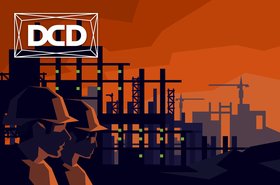In our first preview of DCD>Building at Scale on 26-27 May published last week, we looked at two of the key trends in the construction and development of data centers; the evergreen focus on location and the growing importance of sustainability.
Today we take a look at two further important industry issues; the development of new technologies and tackling the global skills shortage
Let’s start with virtual reality, which has found a growing niche in enabling data center builders not just to show clients what their facilities will look like, but how work is progressing during the build.
Over the past year, though, there has been increased adoption of VR and AR in particular niches as Covid-19 restrictions have made it harder for people to go on-site when they need to. Instead, companies like modular data center builder Kirby have been offering virtual tours using tools like Microsoft’s HoloLens – not just beforehand as a sales tool, but as a means of demonstrating progress during the build.
“Along with what Covid-19 has brought, with HoloLens you can walk through projects and do progress reports, showing how the project is being built because clients love to get to the site, but they can’t, in some cases. We're [also] doing factory acceptance tests and site acceptance tests through HoloLens and all that good stuff,” Kirby Group Managing Director Mark Flanagan told DCD’s George Rockett in a recent episode of the DCD>Talks series.
“What we’re trying to achieve is to take the challenges from a project and either have them resolved beforehand and then take them off-site –take this virtual world and it real, it’s as simple as that,” continued Flanagan.
Another trend that has intensified during the pandemic is that major global data center markets are at risk of seeing demand eclipse supply. But while the world’s hunger for data intensifies, Covid-19 has impacted construction productivity and exposed the fragility of the global data center supply chain.
Each year, Turner & Townsend researches and compiles a Data Center Cost Index which analyses construction input costs – including labour and materials – across global markets. Our 2020 index, which looked at 40 key markets and surveyed 162 industry professionals, underlined the huge strain that has been placed on the sector by the global pandemic. 79 per cent of respondents reported that Covid-19 has decreased productivity and increased operating costs on data center construction sites.
This challenge isn’t going to go away. 85 per cent of those we surveyed predicted higher data center construction demand in 2021. 68 per cent now see speed of delivering data centers as more important than build cost, and grasping the vast opportunity in front of us will indeed mean guaranteeing quicker delivery in every region. This is especially true for hyperscale construction schedules, which must be reduced markedly from the current 15-18 month average to remain internationally competitive.
The key to accelerating delivery will be how the sector tackles the global skills shortage. 84 per cent of survey respondents think that meeting data center demand will require the rapid upskilling of local workforces around the world. This extends to the growing secondary regional markets, and expanding cloud regions across Africa.
The pandemic has shown that we can no longer afford to rely on flying-in specialist expertise and a small pool of talent to service a huge global market. Building future resilience rests on investing in regional training strategies, building local skills bases and boosting available capability on the ground in every market across the world.
Understand more about these two big areas of data center development, by registering now for DCD>Building at Scale on 26-27 May , a free-to-view virtual event will connect you with experts in building at scale & speed from NTT, CyrusOne, Quantum Loophole, SAP, Skybox Datacenters, Linesight, Kirby Engineering, ISG, BGIS, Cushman & Wakefield and more to help you tackle the mounting challenges in design and construction post-pandemic by filling in the below form.

